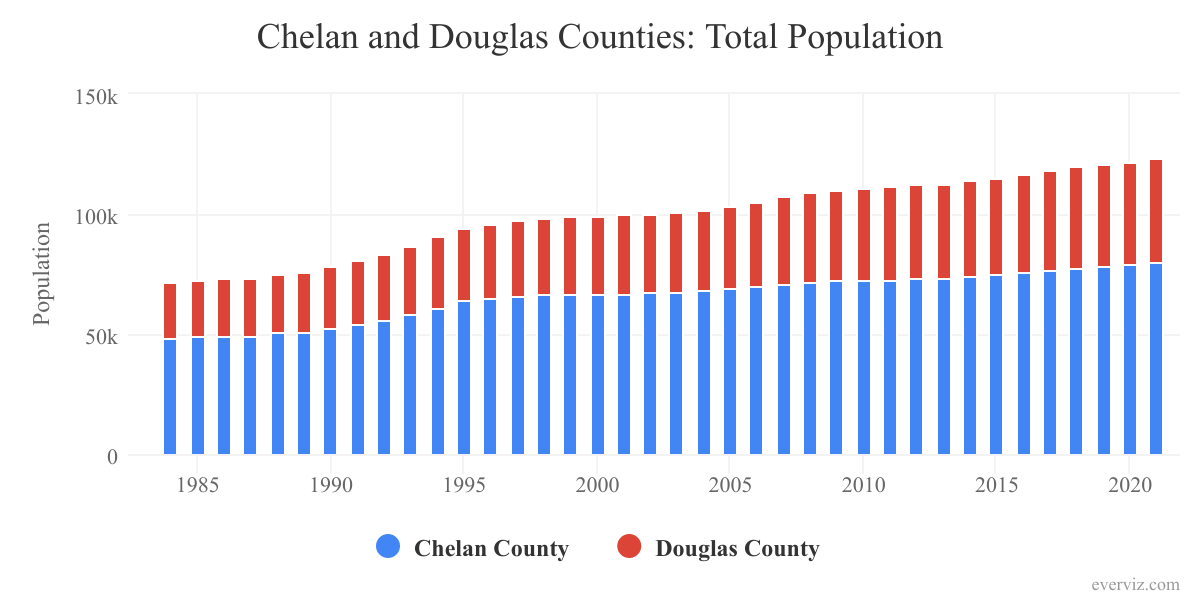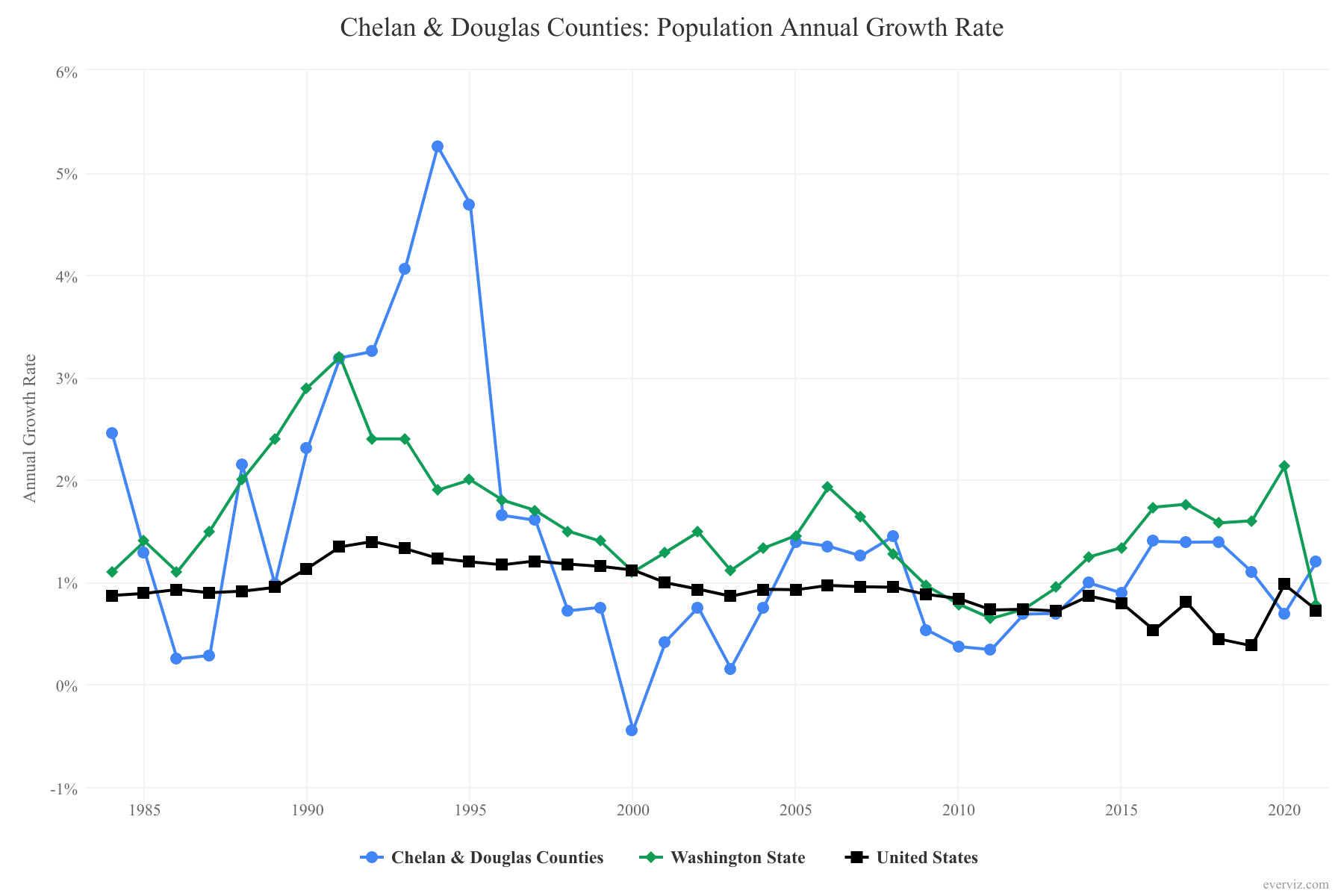by Dr. Patrick Jones
The greater Wenatchee area added to its ranks in 2021 — but not at the rate many may have thought. The Washington Office of Financial Management (OFM) estimates that between the April 1 of 2020 and 2021, the number of souls in the two counties increased by about 1,500. That put the estimate of total residents at 123,500.
The increase is observable in Chelan Douglas Trends 0.1.1, and translates into a year-over-year rate of 1.2%. As the graph shows, growth here bested the rates in both Washington State and in the U.S. The pick-up also represents a rebound from the drop-off observed in the prior year. And it approximately matches the growth rate the region experienced during the second half of the past decade.
What does this result imply for the rank of the two counties among all metro areas in Eastern Washington? A spot in the middle. Grant, Benton and Franklin Counties grew faster in 2021, in that order. Spokane and Yakima Counties grew more slowly. Walla Walla actually lost residents in between 2020 and 2021, due to the importance of two four-year higher education institutions in the county and their reaction to the pandemic. The current ranking more or less repeats relative standings in eastern Washington over the past few years.
Population of any region expands by two routes: births outpacing deaths (the natural increase) and more newcomers exceeding residents who leave. Over the 2020-2021 interval, the number of births in the two counties was 1,265. This total represents a decline of 165, or 12%, from the average of the prior decade. The trend of the growth in the birth rate here has been tilting gradually lower, but the pandemic experience marked the year with largest year-over-year decrease on recent record.
This likely consequence of the pandemic was not unique to the greater Wenatchee area. The U.S. Census recently reported that the number of births nationally was 4.1% lower than in 2019. (The data for the two counties imply an 8% year-over-year decrease.)
Not surprisingly, since we found ourselves in a pandemic, the number of deaths was higher than the prior year. Over time, the number of deaths in the two counties has been creeping up, due to a growing population and general aging of that population. (Trends indicator 0.1.2 shows the median age nudging up from 37.5 in 2005 to 39.5 in 2019.) Yet, the increase of deaths over the prior year, at 50, hardly represents a spike. Give credit to a strong response from the area’s health care community and a high vaccination rate, at least relative to Eastern Washington.
The resulting balance of births over deaths between 2020 and 2021 in the two counties was a mere 148. The average over the prior decade: 443.
Consequently, the bulk of the population increase between 2020 and 2021 was due to net in-migration. A fuller discussion of this component is taken up in a companion story of the newsletter. We’ll just note here that OFM’s demographers put the gain at slightly over 1,230.
And what about the next few years? In 2017, as part of the Growth Management Act legislation, OFM issued its most recent population forecast for the two counties. By 2025, it is calling for a combined population of about 129,000, up from approximately 123,500 today. In 2030 the current forecast foresees a total population at nearly 135,000. In the coming year, these numbers will be revised. Don’t expect a great swing, however. To-date, OFM demographers’ crystal ball for the two counties has been quite accurate, erring slightly on the upside.
In short, look for a gain of about 11,000 between now and 2030. What part of the region will these new residents call home? If the patterns of the past decade continue, Douglas County will absorb a slightly increasing slice versus Chelan County, while Wenatchee’s share will slightly outpace that of East Wenatchee. The city of Chelan’s growth rate will be a bit higher than that of Wenatchee.
Does 11,000 represent a number the two counties can absorb without too many costs? It strikes this observer as likely. In fact, one could make a good case that these newcomers will raise the standard of living here, and on balance, provide more benefits than costs. But that’s a topic for a future column. The goldilocks rate – not too fast, not too slow – is likely different for different residents of the two counties.


